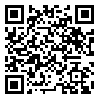BibTeX | RIS | EndNote | Medlars | ProCite | Reference Manager | RefWorks
Send citation to:
URL: http://tumj.tums.ac.ir/article-1-1271-en.html
Background: Cyclosporin A (CsA) is now commonly used in the management of children with steroid-dependent and steroid resistant nephoitic syndrome. It has been reported to be effective in maintaining remission in 70-100 percent of patients with SDNS but somewhat SRNS 0-100 percent. The aim of this study was to evaluate the efficacy of long-term (CsA) in children with refractory nephrotic syndrome (RNS) and steroid dependent nephrotic syndrome (SDNS).
Materials and Methods: The long-term effect of (CsA) in 91 Iranian children aged 3 months to 11 years (54 with RNS and 37 with SDNS) was assessed between 1984 and 1999. Eighty of 91 children received renal biopsy prior to introduction of (CsA), and the other 11 patients had not consent for kidney biopsy. If the patients did not show remission aftre receiving 3-6 months of (CsA), the medication was discontinued.
Results: All patient were treated with (CsA) in combination with low dose alternate day prednisolone. In children with RNS and SDNS, therapy with (CsA) induced, remission in 25 of 54 (46.2 percent) and 27 of 37 (73 percent) respectively (P<0.02). Of the 32 patients with minimal change disease (MCD), 23 (72 percent) responded to therapy, compared with 4 of 18 (22 percent) with focal segmental glomerulosclerosis (FSGS) (P<0.005). Twenty-four (48 percent) of 50 who entered complete remission, had relapse 1-12 months after cessation of (CsA). The duration between the onset of nephrotic syndrome (NS) and administration of (CsA) and sexuality of patients had no effect in result of treatment. Side effects occurred in 25 patients (27.4 percent). No patients exhibited raised transaminases, 8 (8.7 percent) of the children developed hirsutism, 7 (7.6 percent) hypertension, 7 (7.6 percent) gingival hyperplasia, (2.2 percent) neurological toxicity and 1 (1 percent) increase in serum creatinine.
Conclusion: Our findings suggest that (CsA) can be used to induce a complete remission in a significant proportion of patients with RNS and SDNS, and patients with SDNS have areasonable potential for remission than children with RNS. Resistant to steroid and cyclophosphamid.
| Rights and permissions | |
 |
This work is licensed under a Creative Commons Attribution-NonCommercial 4.0 International License. |





